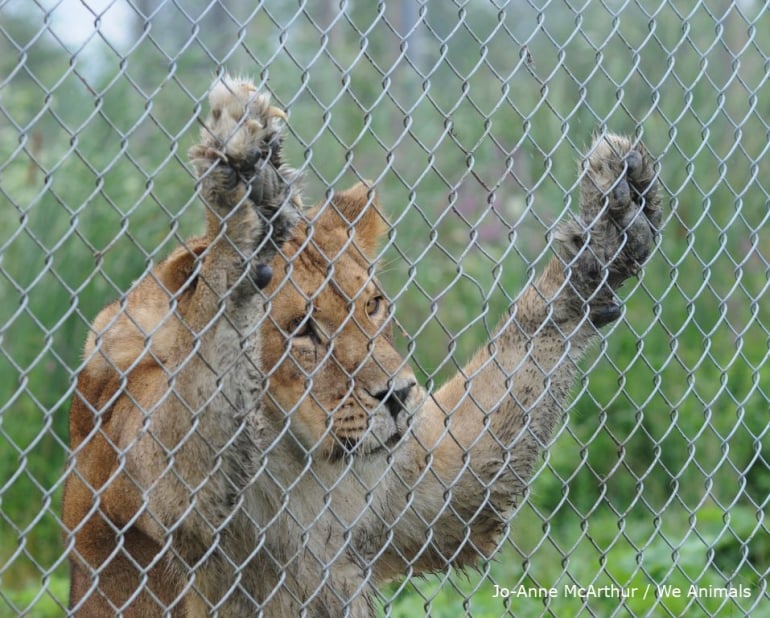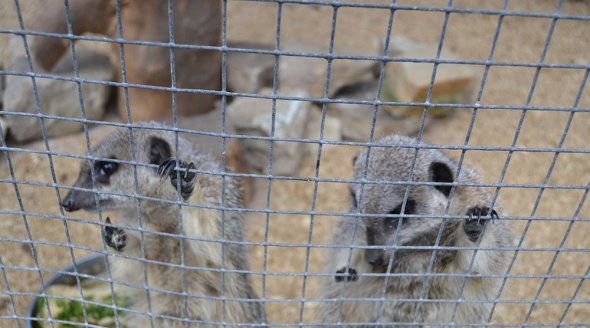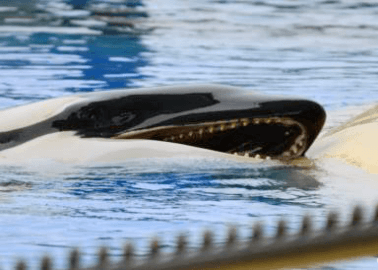Lion Shot Dead for Behaving Like a Wild Animal
How many more people have to be hurt or killed by wild animals kept in confinement before we accept that these animals don’t belong in captivity?
— Pāʻani (@unclemissouri) April 30, 2018
Every year, we see – yet still fail to learn – that caging them brings tragedy for both animals and humans. Only last year, Rosa King, a zookeeper at a wildlife park in Cambridgeshire, was mauled and killed by a captive tiger, and today a lion is dead and a man in hospital after a similar attack at the Marakele Predator Centre in South Africa.
Whether they’re called safari parks, drive-through wildlife reserves, game parks, or zoos, these facilities are nothing more than animal prisons maintained for human amusement. No amount of time in captivity can take away from a wild animal’s natural instincts. Lions, for example, roam far and wide, claim territory, and seek out mates in nature – none of which they can do in captivity. Oxford University researchers concluded that animals who are wide-ranging by nature experience physical and psychological anguish in captivity and should be phased out of zoos altogether.
In this most recent incident, Mike Hodge, the park’s owner, entered the enclosure, knowing that the lions were nearby and unsettled. A lion easily caught him and dragged him into the bushes as witnesses screamed in fear and panic. Reportedly, the animal was later killed, despite doing nothing more than acting like a lion.
Even the “best” zoos and safari parks can’t and don’t guarantee the care and safety of the animals they keep for profit, the public who come to view them, or the zookeepers. Who can forget Harambe, the gorilla who was gunned down after a young boy managed to crawl through a fence before falling into his enclosure at the Cincinnati Zoo? Of course, we’ll never know what would’ve happened if the zoo hadn’t shot Harambe, but we do know that if he hadn’t been locked up to serve as a high-earning sideshow, the incident would never have occurred.
These animals aren’t where they belong. Nevertheless, zoos continue to breed them under the guise of “conservation” to produce crowd-pleasing babies and to bolster their inventories. Of course, breeding programmes inevitably result in a surplus of less crowd-pleasing adult animals. There’s never enough space for them all, so zoos routinely trade, loan, sell, and warehouse adult animals they no longer want.
In South Africa, lions are often sold to become target practice in canned hunts for rich people who get a twisted sense of pride from having the animals’ stuffed heads mounted on their walls. We know zoos and safari parks readily sacrifice individuals for the supposed eventual good of the species. In fact, species survival plans would be better titled “individual death plans”. In the wake of Marius the giraffe’s undignified slaughter in 2014 at Copenhagen Zoo – which was performed with a shot to the head instead of a painless euthanasia injection so that his corpse could be fed to lions – the chief executive of Longleat safari park admitted that his zoo churned out lion cubs to “bring in more people” and a whistle-blower reported the killing of four cubs because of inbreeding.
Zoo owners today must stop pretending that zoos make meaningful contributions to conservation. They should instead be at the forefront of the movement to target the root causes of extinction and endangerment of animals all over the world: habitat destruction, poaching, and the exotic-animal trade. These fundamental causes of species endangerment must be addressed and remedied.
All the cages in the world won’t save animals from extinction, and as long as we continue to treat wild animals as living exhibits, it’ll only be a matter of time before we’re talking about the next victim of a captive-animal attack.
What Can You Do?
Please don’t visit zoos! Withhold your money from these inhumane establishments that profit from exploiting animals. We can protect endangered species by supporting habitat conservation, not animal prisons.





